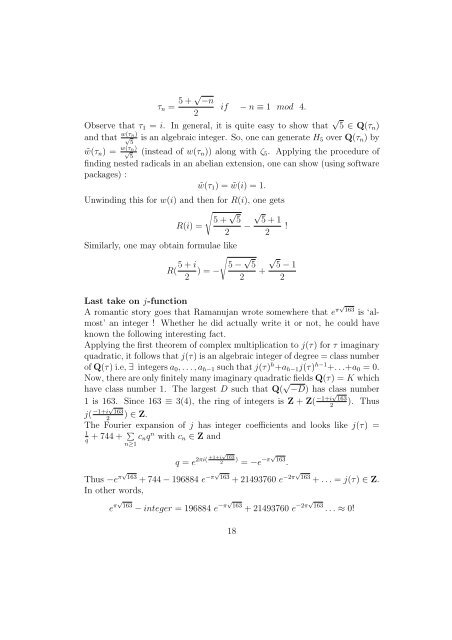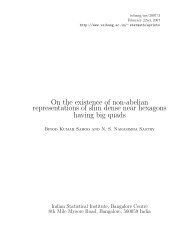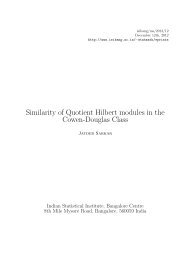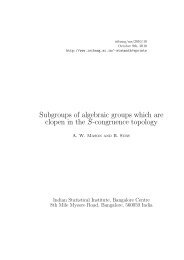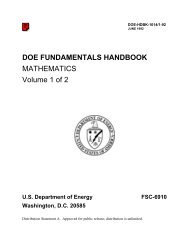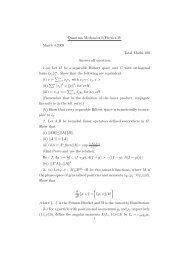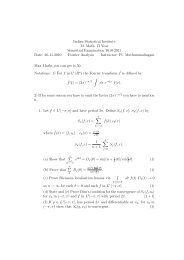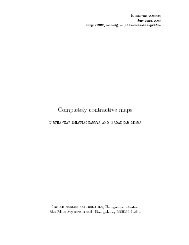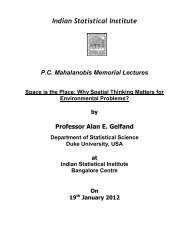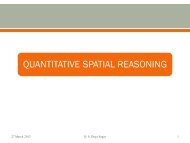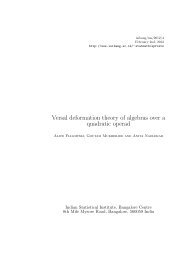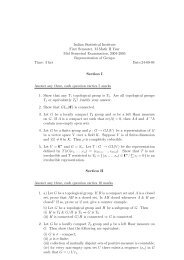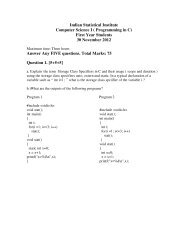Ramanujan's route to roots of roots - Indian Statistical Institute
Ramanujan's route to roots of roots - Indian Statistical Institute
Ramanujan's route to roots of roots - Indian Statistical Institute
You also want an ePaper? Increase the reach of your titles
YUMPU automatically turns print PDFs into web optimized ePapers that Google loves.
τ n = 5 + √ −n<br />
if − n ≡ 1 mod 4.<br />
2<br />
Observe that τ 1 = i. In general, it is quite easy <strong>to</strong> show that √ 5 ∈ Q(τ n )<br />
and that w(τ √ n)<br />
5<br />
is an algebraic integer. So, one can generate H 5 over Q(τ n ) by<br />
˜w(τ n ) = w(τn) √<br />
5<br />
(instead <strong>of</strong> w(τ n )) along with ζ 5 . Applying the procedure <strong>of</strong><br />
finding nested radicals in an abelian extension, one can show (using s<strong>of</strong>tware<br />
packages) :<br />
˜w(τ 1 ) = ˜w(i) = 1.<br />
Unwinding this for w(i) and then for R(i), one gets<br />
√<br />
5 + √ √<br />
5 5 + 1<br />
R(i) = − !<br />
2 2<br />
Similarly, one may obtain formulae like<br />
√<br />
R( 5 + i<br />
2 ) = − 5 − √ 5<br />
+<br />
2<br />
√<br />
5 − 1<br />
Last take on j-function<br />
A romantic s<strong>to</strong>ry goes that Ramanujan wrote somewhere that e π√163 is ‘almost’<br />
an integer ! Whether he did actually write it or not, he could have<br />
known the following interesting fact.<br />
Applying the first theorem <strong>of</strong> complex multiplication <strong>to</strong> j(τ) for τ imaginary<br />
quadratic, it follows that j(τ) is an algebraic integer <strong>of</strong> degree = class number<br />
<strong>of</strong> Q(τ) i.e, ∃ integers a 0 , . . . , a h−1 such that j(τ) h +a h−1 j(τ) h−1 +. . .+a 0 = 0.<br />
Now, there are only finitely many imaginary quadratic fields Q(τ) = K which<br />
have class number 1. The largest D such that Q( √ −D) has class number<br />
1 is 163. Since 163 ≡ 3(4), the ring <strong>of</strong> integers is Z + Z( −1+i√ 163). Thus<br />
2<br />
j( −1+i√ 163) ∈ Z.<br />
2<br />
The Fourier expansion <strong>of</strong> j has integer coefficients and looks like j(τ) =<br />
1<br />
+ 744 + ∑ c<br />
q n q n with c n ∈ Z and<br />
n≥1<br />
q = e 2πi( +1+i√ 163<br />
2 ) = −e −π√ 163 .<br />
Thus −e π√ 163 + 744 − 196884 e −π√ 163 + 21493760 e −2π√ 163 + . . . = j(τ) ∈ Z.<br />
In other words,<br />
e π√ 163 − integer = 196884 e −π√ 163 + 21493760 e −2π√ 163 . . . ≈ 0!<br />
18<br />
2


